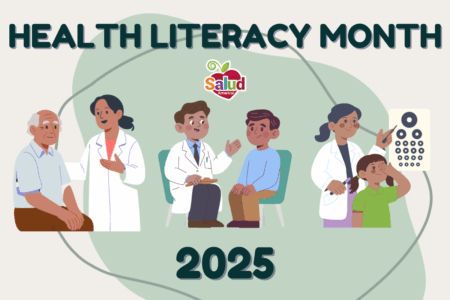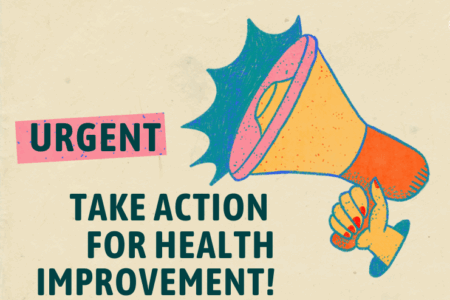
Share On Social!
Heart disease is a persistent threat for many Americans, including Latinos.
As of 2022, heart disease is the leading cause of death of people living in the US, according to the Centers for Disease Control and Prevention (CDC).
Many behaviors contribute to an increased risk for heart-related diseases, from lifestyle choices such as smoking, excessive alcohol use, physical activity, poor diet, as well as many health conditions, such as stress, obesity, and diabetes.
And researchers are still learning more about these and other risks.
In fact, let’s explore six recent studies on the relationship between physical behaviors and the risk of heart disease that you should be aware of.
1. Viral Infections Can Increase Risk for Heart Disease
Viral infections, such as the flu and shingles, can leave your body open to secondary infections and worsen existing chronic conditions like asthma.
But did you know it can also impact your risk for heart disease?
Analysis published in the Journal of the American Heart Association link viral infections to an increased risk of heart disease over a long-term period following the infection.
This applies to HIV and hepatitis C as well.
Overall, people who caught the flu were six times more likely to have a heart attack the month following the infection, according to a CNN article about the study.
“We have known for some time that infections raise your risk of having a heart attack, so that if you have influenza, if you get any kind of infection … whether it’s bacterial or viral, that increases your risk of having a heart attack,” Dr. Patricia Best, a cardiologist at the Mayo Clinic in Rochester, Minnesota, told CNN.
Experts on the subject commented that the best way to lower the risk of heart disease following an infection is to get vaccinated.
2. COVID-19 Infections Can Increase Risk for Cardiovascular Disease and Stroke
It recently came out that COVID-19 vaccines could potentially help the immune response for people fighting cancer.
But did you know that COVID-19 infections could increase your risk for cardiovascular disease and stroke?
According to a study published in the journal Arteriosclerosis, Thrombosis, and Vascular Biology, individuals who caught COVID-19 before the invention of a vaccine had double the risk for heart attacks, stroke, or death for three years following being sick, compared to those without COVID-19.
The risk factor was even greater for individuals who were hospitalized with COVID-19.
In fact, the study found that the risk factor for heart attack and stroke was roughly the same in COVID-19 hospitalized patients as they were in someone with diabetes or peripheral artery disease.
Between May 2020 and April 2021, there more than 3.5 million Americans estimated to be hospitalized with COVID-19.
Unlike other viral infections, the risk factor for COVID-19 didn’t diminish over a shorter period of time, according to a CNN article about the study.
3. Excessive Melatonin Use Associated with Heart Failure
Your health, well-being, and ability to function are dependent on a good night’s rest.
The National Institutes of Health describes melatonin as “a hormone that your brain produces in response to darkness” that helps with sleep.

So, when your body fails to make enough of that hormone, some turn to a sleep-aid replacement for help.
The dietary supplement known as melatonin has been used for decades and works by helping add to your body’s natural supply of the hormone to help you sleep.
However, now researchers are wondering if too much of the popular supplements can do more harm than good.
Research presented at the American Heart Association’s Scientific Sessions 2025 meeting associated the supplement with a higher risk for heart failure and death, according to an American Heart Association news release.
They came to this conclusion after examining 5 years of health records for adults with insomnia who were treating themselves with melatonin for at least a year.
What they found was that users were “more likely to be diagnosed with heart failure, require hospitalization for the condition or die from any cause,” according to the news release.
While the study can’t necessarily say with certainty that melatonin is the culprit, the relationship is there, and more research is needed to determine if melatonin is safe to use.
4. Excessive Screen Time Can Boost Heart Disease Risk
Extended or excessive use of screens can spell trouble for your health.
Screen use has been linked to poorer eye health, mental health, and can lead to a higher risk of certain chronic illnesses, including heart disease.
A recent study examining excessive screen time in young children found it was linked to a higher cardiometabolic illness risk, including high blood pressure, high cholesterol, and insulin resistance — all which can be traced to heart disease along with many others.
Researchers believe that the link could be attributed to lack of sleep.
This aligns with the finding on melatonin because more screen time at night can impact your body’s natural production of the melatonin hormone.
5. TV and Heart Disease Risk
While time spent on smaller screens around bedtime can increase the risk for heart disease, doing the opposite could significantly cut down on the risk.
Because TV is a relatively sedentary behavior that keeps people inactive, sitting in front of the television could have horrible health effects.
A study published in the Journal of the American Heart Association explores the relationship between TV use and type 2 diabetes and heart disease.
This particular study found that cutting back TV time to an hour or less could greatly lower the risk for heart disease, even in those who presented a greater genetic risk for type 2 diabetes, according to an American Heart Association news release.
Researchers came to this conclusion by surveying TV users who watched TV for one hour or less and those who watched TV for two or more hours daily.
21% of respondents reported watching one of less hours of TV each day.
When compared to the 79% of respondents who watched more TV per day, those who watched an hour or less had a 12% less chance of developing Atherosclerotic cardiovascular disease (ASCVD).
6. Exposure to Chemicals in Plastics Could Impact Heart Disease Risk
From what we use to cook our food to the containers we store our food in, chemicals are all around us.
And some are more dangerous than others.
For instance, the US is rife with items that contain forever chemicals.
Forever chemicals are harmful chemicals that can seep into food and water and make us sick. They got their name because they can’t break down over time, causing a lot of harm to the environment, including plants, animals, and people.
When exposed to them, these chemicals can cause adverse health effects such as impacts to a baby’s development and increase cancer risk.
Now, researchers are linking certain plastics to heart disease.
In a report published in eBioMedicine, researchers have found a relationship between common household plastics and heart disease deaths.
These chemicals can be found in shampoos, lotions, food packaging, and medical supplies, including blood bags. It’s an additive that makes plastic soft and flexible, according to an accompanying ScienceNews article.
The chemicals were linked to 13.5% of the more than 2.6 million deaths from heart disease among individuals who were between the ages of 55 and 64 around the world in 2018, according to the article.
This amounts to more than 350,000 deaths.
These chemicals, known as phthalates, can enter the body when consumed via food or absorbed through the skin when applied. Phthalates have also been associated with diabetes, obesity, and pregnancy complications.
As plastic use becomes the norm in society, researchers worry that this problem will escalate if something isn’t done to decrease plastic consumption.
“We’re going to become the plastic planet,” Changcheng Zhou, a biomedical scientist at the University of California Riverside, told ScienceNews. “We need to start to really address this serious issue.”
Improve the Heart Health of Your Community
Do you know where your community stands on important issues such as health factors that could increase your chances of developing heart-related illnesses?
Find out by downloading a Salud America! Health Report Card for your town!
Enter your county name and get auto-generated local data with interactive maps and comparative gauges on several health indicators. This can help you visualize and explore local issues in education, housing, transportation, food, health, and more.
See how your county stacks up compared to the rest of your state and nation.
Then email the Report Card to local leaders to raise awareness, include the data in a presentation or grant proposal, or share it on social media to drive healthy change in your community!
Explore More:
HealthBy The Numbers
142
Percent
Expected rise in Latino cancer cases in coming years



